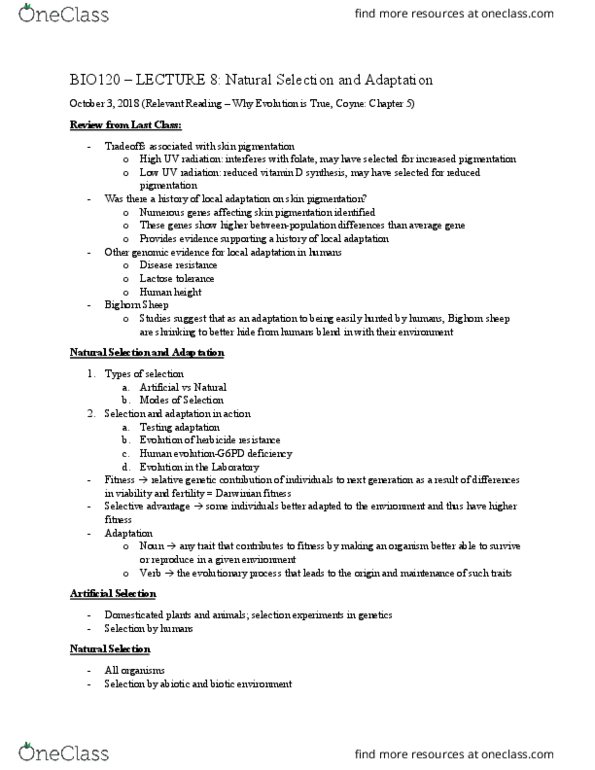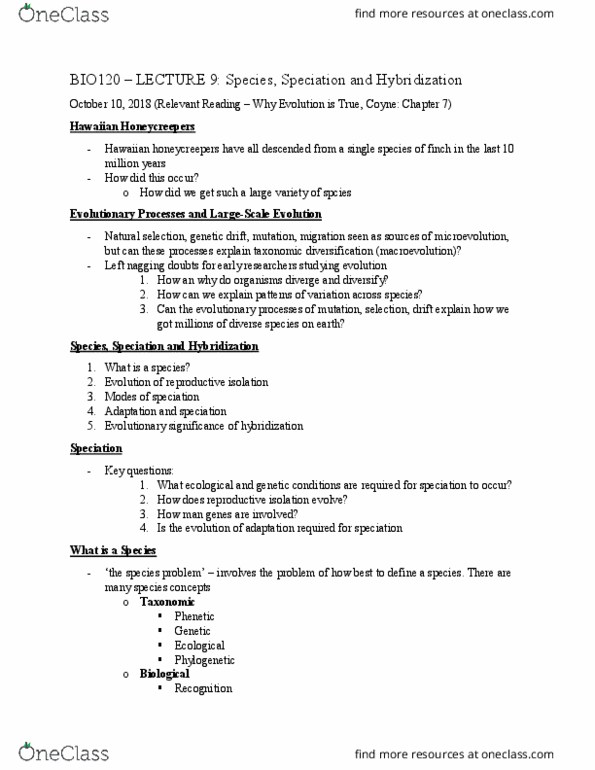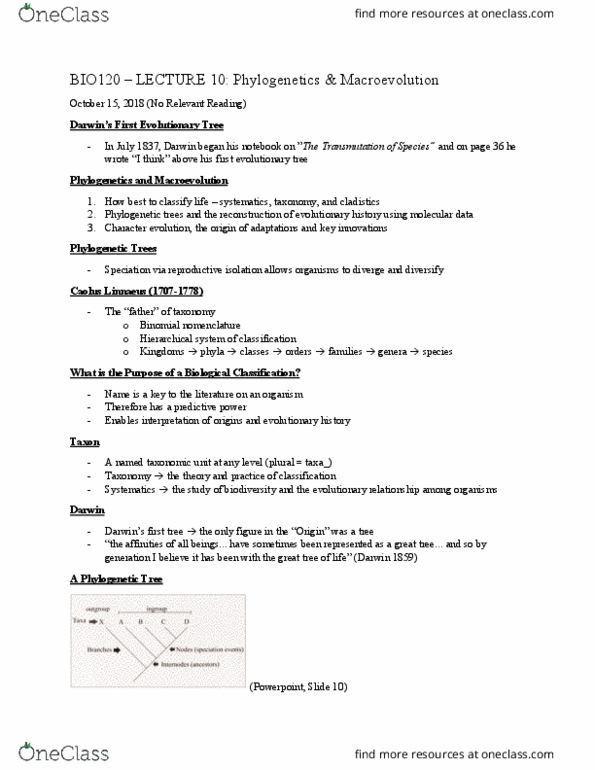1.. Polymorphisms for a given trait are relatively common in most species. Discuss the possible advantages or polymorphisms in terms of evolutionary fitness. Be sure to relate your discussion to a specific example. It is also possible that organisms showing more heterozygosity may actually be less fit. Describe one such possible scenario.
2. In the peppered moth (Biston betularia), black individuals may be either homozygous (A1A1) or heterozygous(A1A2), whereas the pale gray moths are homozygous (A2A2). Suppose that in a sample of 250 moths from one locality, 108 are black, and 142 are gray.
3. Retrace the history of primate evolution from early primates to monkeys, apes and hominins. When did some ofthe significant divergences occur (such as between the prosimians and the monkeys or between the chimps and hominins)? What was happening with the continents and the major climatic conditions during these times?What are the major species (including the extinct species) along the human lineage after the split with the chimps and bonobos? Where did many of these events occur on the globe and when?
4. Spencer Wells described his study how the genetic markers in humans are being used to infer the historical geographical distribution of humans and the dispersal of our ancestors. Explain how the genetic markers on our DNA (from blood samples) helps us understand that history. What are the techniques he is using? What is the nature of the evidence? What are the major conclusions about the journey of our ancestors out of Africa?What were the major migrations of humans to all the other continents? Approximately when did each migration occur and what were the major paths? How does the evidence support these conclusions? What Supporting evidence besides the DNA evidence is being used to support these conclusions?
5. Provide an adaptive and a non adaptive hypothesis for the evolutionary loss of useless organs, such as eyes in many cave-dwelling animals. How might these hypotheses be tested?
6. Directional selection is one of the models of natural selection. Describe this type of selection in terms of the frequencies of advantageous alleles over time. What is the trend over time? What is the eventual outcome for this allele as long as no other evolutionary factors intervene? Describe at least one good example of directional selection.
7. Consider the first copy of an allele for insecticide resistance that arises by mutation in a population of insects exposed to an insecticide. Is this mutation an adaptation? If, after some generations, we find that most of the population is resistant, is the resistance an adaptation? If we discover genetic variation for insecticide resistance in a population that has had no experience of insecticides, is that variation an adaptation? If an insect population is polymorphic for two alleles, each of which confers resistance against one of two pesticides that are alternately applied, is that variation an adaptation? Or is each of the two resistance traits an adaptation?Explain your reasoning thoroughly.
8. Suppose that a mutation in a species of annual plant increases allocation to chemical defenses against herbivores, but decreases production of flowers and seeds (i.e., there is an allocation trade-off). What would you have to measure in a field study in order to predict whether or not the frequency of the mutation will increase?
9. In many socially monogamous species of parrots and other birds, both sexes are brilliantly colored or highly ornamented. Is sexual selection likely to be responsible for the coloration and ornaments of both sexes? How can there be sexual selection in pair-bonding species with a 1:1 sex ratio, since every individual presumably obtains a mate? Which of the models of sexual selection described in the book might account for these species characteristics?
10. Kin selection explains why organisms may provide benefits to relatives. Is there a conflict between the principle of kin selection and the evolution of siblicide and abortion?
11.Many species of albatrosses and other seabirds nest in colonies on islands. The adult search for food at sea,sometimes over great distances. Some ecologists who study seabirds turn to their favorite topic of discussion in a bar one evening, and one says, âI can imagine an albatross genotype that destroys the eggs of nestlings of its colony mates when the parents are away foraging, and leaves them dead without eating them. Do you think such a behavior would evolve?â One of his companions says, âYes, because it would make more food available for the albatross and its offspring.â Another says, âNo, because it would threaten the survival of the population.â The fourth says, âYouâre both wrong. I have a different explanation for why albatrosses donât kill othersâ chicks.â What is the fourth ecologistâs explanation, and why does she think her companions are wrong?
12. The concept of a species is fundamental to understanding biology, yet there may not be one definition that fits all âtypesâ of organisms (e.g. animals, plants, fungi, bacteria, slime mold, lichens, etc.). Discuss several of the definitions of a species as presented in class and present your own definition for a species. Compare the strengths and weaknesses of each definition. Ernst Mayr is strong proponent of the biological species concept.How does he justify his position? Do you agree or disagree? If we employ the biological species concept, when did species first exist? What were organisms before then, if not species? What might the consequences of the emergence of species be for processes of adaptation and diversification? Be sure to explain your reasoning thoroughly.
13. The process of speciation ultimately involves the development of reproductive isolation between two related populations of organisms. Describe the various types of both prezygotic and postzygotic reproductive isolation and give an example of each.
14. Respond to the following quote from the character named Mr. Spock in âStar Trekâ:âA truly successful parasite is commensal, living in amity with its host, or even giving it positive advantages, as for instance, the protozoans who live in the digestive system of your termites and digest for them the wood they eat. A parasite that regularly and inevitably kills its host cannot survive long, in the evolutionary sense, unless it multiplies with tremendous rapidity ... it is not pro-survival.âFrom what you have learned in this course, do you agree or disagree with Spock? How can you apply your reasoning to the relative âfitnessâ of HIV which causes AIDS, the Ebola virus which causes hemorrhagic fever,fleas which suck blood from dogs, or the prokaryotic ancestors of mitochondria and chloroplasts?
15. In many species of birds and mammals, clutch size is larger in populations at high latitudes than in population sat low latitudes. Species of lizards and snakes at high latitudes often have smaller clutches, however, and are more frequently viviparous (bear live young rather than laying eggs), than low-latitude species. What selective factors might be responsible for these patterns? Explain your reasoning.
16. The popular media often presents evolution as being a predictable process with a definite goal. For instance, in one âStar Trek: Voyagerâ episode, the captain instructs the shipâs computer to extrapolate the âprobable courseâ of evolution of hadrosaurs (a bipedal dinosaur), if hadrosaurs had been removed from Earth before the Cretaceous-Tertiary (K-T) Extinction and allowed to evolve on another planet. What information about the hadrosaursâ new environment would have been useful in developing the best possible prediction? Given what you know on genetic drift and selective agents, is it possible to accurately predict the long-term course of evolution?
17. Young children often develop strong food preferences that sometimes seem bizarre to their parents --- such as wanting to eat only a certain food prepared in a familiar way, or being reluctant to each new foods or foods with strong or bitter tastes (like coffee and some vegetables). Develop an evolutionary explanation for such preferences. What evidence would you gather to investigate your hypothesis and rule out alternative explanations?
18. Many organisms, such as mammals, only reproduce by sexual means. Other organisms are exclusively asexual,such as many of the bacteria and fungi. And still others have ways of propagating by both sexual and asexualmeans. Discuss the relative advantages and disadvantages of each mode of reproduction. Why arenât all organisms sexual critters? Why are many asexual organisms still very successful as evidenced by the pure abundance and diversity? What is the adaptive significance of having different genders (e.g. male and female)?In other words, why sex?
19. How might differential expression and regulation by Hox genes contribute to mosaic evolution in which different segments of an animal body plan evolve different morphology?
20. Development of a morphological structure involves many different types of gene products, including transcription factors, signaling proteins, and âeffectorâ genes such as enzymes. When a morphological change occurs in a single mutational step, which of these types might be more or less likely to be involved? Within a gene, would such single-step events be more likely to involve coding or non-coding sequences, and what characteristics of the geneâs function might affect this likelihood?
21. Since 2001, the complete DNA sequences of the genomes of many people have been determined. If humans,along with other forms of life, have evolved from a common ancestor, what evidence of this would be expected in the human genome? In what ways might the history and processes of evolution help us interpret and make sense of the human genome sequence data?
22. Paleontologists and some biologists commonly infer function, and even behavior, from anatomical details.Skeletal features, for example, are often used to infer that an extinct mammal (such as an early hominid) was highly, somewhat, or not at all arboreal. This inference assumes a good fit of form to function (i.e., optimal form). Can this assumption be justified?
23. Stephen Jay Gould (1989) and others have argued that the evolution of self-conscious, intelligent species (i.e.humans) was historically contingent: it would not have occurred had any of a great many historical events been different. The philosopher Daniel Dennett (1995) and others have disagreed, arguing that convergent evolution is so common that if humans had not evolved, some other lineage would probably have given rise to a species with similar mental abilities. What do you think, and why? If Gouldâs position is right, what are its philosophical implications, if any?
24. Explain how Intelligent Design was determined as a religious view rather than a scientific view in the court casein Dover, PA. Should a scientific explanation of evolution be included in a science curriculum in K-12 schools?How is science and religion different in how they seek answers to questions? How is term "theory" used differently in science than in everyday English use? What is biological evolution? What evidence is used to support the scientific explanation of evolution? Is it possible to accept scientific explanations without rejecting religious faith?
25. Discuss how a creationist versus an evolutionary biologist might explain some human characteristics and the implications of their differences. Sample characteristics: eyes; wisdom teeth; individually unique friction ridges(fingerprints); five digits rather than some other number; susceptibility to infections; fever when infected;variation in sexual orientation; limited life span.






